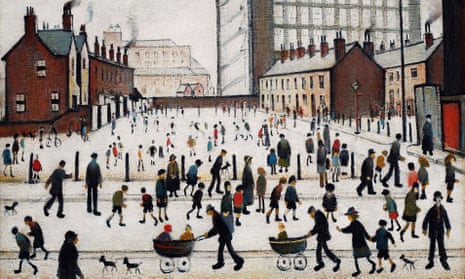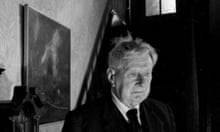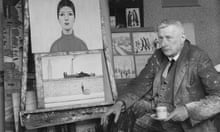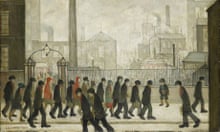An important LS Lowry painting that has never been publicly exhibited or featured in any books on the artist has emerged 70 years after its young British owner set off for a new life in the US.
Leonard D Hamilton was a Manchester grammar school boy who studied at Balliol College, Oxford, and Trinity College, Cambridge, before moving to the US in 1949. He was a brilliant researcher who played an important role in the discovery of the structure of DNA.
He was also the proud owner of a 1943 painting by Lowry, thought to be a gift from his parents, which hung in his rooms at Oxford.
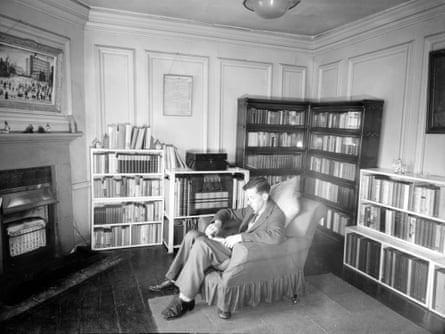
Hamilton died this year aged 98 and the painting, The Mill, Pendlebury, will be a star of Christie’s modern British art auction on 21 January.
“What’s unusual about this is that it just doesn’t feature anywhere in the literature at all,” said Nick Orchard, the head of modern British art at the auction house. “It is a lovely painting and a great composition. You’ve got everything you want in a Lowry … lots of people doing lots of different things, terraced houses, factories in the background. It ticks all the boxes for Lowry.”
The newly discovered painting is a working-class industrial scene dominated by the Acme Spinning Company Mill, the UK’s first all-electric powered cotton spinning mill, which opened in 1905 and operated until 1959. It was demolished in 1984.
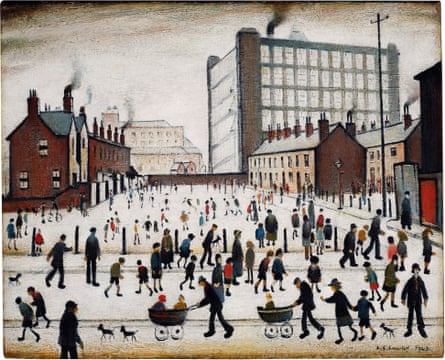
Lowry shows families out for a walk on their day off and children playing cricket. The scene is important because it was the same mill that first inspired Lowry as an artist. It was 1916 and after missing his train Lowry looked at the scene with new eyes.
He later recalled the moment: “The mill was turning out hundreds of little, pinched figures, heads bent down … I watched this scene – which I’d looked at many times without seeing – with rapture.”
Hamilton emigrated to the US in 1949, becoming a medical researcher at the Sloan Kettering Institute in New York.
In the late 1940s and early 1950s, he developed techniques for extracting and purifying mammalian DNA which he supplied by air to Maurice Wilkins and other scientists who discovered the double helix structure of DNA.
Wilkins, who won the Nobel prize with James Watson and Francis Crick, wrote in his autobiography: “And just a few days later, my friend Leonard Hamilton (another art enthusiast) … sent us excellent quality human DNA from his lab. Leonard was to become our main supplier of DNA.”
Another of Hamilton’s claims to fame was that he and his family were the sole holdout tenants in a block of brownstones that were being demolished in the late 1950s. The house became famous as the “loneliest brownstone” in a Life magazine feature on “Vanishing New York”. Vincente Minnelli used it in his 1960 film, Bells Are Ringing.
Hamilton would later live in a fabulous house outside New York designed by modernist architects Barbara and Julian Neski. The Lowry by now was part of an impressive personal art collection that included works by Picasso, Whistler, Matisse and Bonnard.
Lowry’s reputation has changed dramatically over the decades. He was always liked by the public, but the art establishment took some time to catch up. One of the first people to recognise his talents was his teacher at the Salford School of Art, who wrote an encouraging review for the Manchester Guardian in 1921.
Orchard said many critics probably never rated Lowry precisely because he was popular.
“In the past there was an element of people turning their noses up at his work. They didn’t see him as being a serious artist because he didn’t fit in to any art movement,” said Orchard. “He is an amazing artist, he recorded life that you can’t see any more in the UK. There is a huge amount of pathos and emotion in these paintings, he understands the lives of the people in the paintings.”
The auction record for a Lowry painting is £5.6m. Two of his paintings reached that sum: The Football Match and Piccadilly Circus. The Mill, Pendlebury has been estimated at £700,000 to £1m.
